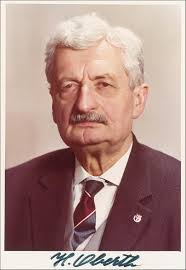MOON:
The crater SPIRU HARET (Longitude: -179 deg; latitude: -59 deg; diameter: 29 km)
SPIRU HARET (1851-1912): the first Romanian who obtained
the Ph.D. in astronomy in Paris (1878), with the thesis "Sur l'invariabilite
des grandes axes des orbites planetaires". As the Minister of National Education,
he emitted the Decree of foundation of the Bucharest Observatory, the first
Romanian institution dedicated to astronomical research.
VENUS:
The crater ELENA VACARESCU (Longitude: +199.8 deg; latitude: -62.9 deg; diameter: 32 km)
ELENA VACARESCU (1866-1947): Romanian poet and novelist. First female ambassador of Romania (1924, League of Nations).
ASTEROIDS:
(2331) PARVULESCO (Discovered 12 March 1936 by E. Delporte at Uccle, Belgium)
CONSTANTIN PARVULESCU (1890-1945): professor of astronomy at the universities of Cernauti, Timisoara and Cluj, Director of the Cluj observatory. Author of important works concerning galaxies, globular clusters, and binary stars. The asteroid was also named in honor of his children CARINA PARVULESCU (contributions in stellar and galactic dynamics) and ANTARES PARVULESCU (mathematical physicist and acoustician).
(4268) GREBENIKOV (Discovered 5 October 1972 by T. M. Smirnova, at Nauchnyj, Russia)
(6429) BRANCUSI (Discovered 26 March 1971 by C. J. van Houten and I. van Houten-Groeneveld at Palomar, USA)
CONSTANTIN BRANCUSI (1876-1957): Romanian sculptor, a
landmark name in the universal art. His creation is unique by the maximum
concentration of the expression, tending to reduce the forms to their essence.
Considered the father of the modern sculpture, he is the author of worldwide
famous "Column of Infinity", "Gate of Kiss", "Table of Silence", "Miss Pogany",
"The Prayer", "The Miraculous Bird", etc. The year Brancusi is one of the
2001 UNESCO celebrations.
 Hermann OBERTH (1894-1989)
Hermann OBERTH (1894-1989)
(9253) OBERTH (Discovered 25 March 1971 by C. J. van Houten, I. van Houten-Groeneveld, and T. Gehrels at Palomar, USA)
HERMANN JULIUS OBERTH (1894-1989): Scientist of Romanian origin, born in Sibiu, Romania. He is, along with Konstantin Tsiolkovsky and Robert Goddard, one of the three founding fathers of rocketry and modern astronautics. His Die Rakete zu den Planetenraumen (The Rocket into Planetary Space) (1923, then 1929) was internationally celebrated as a work of tremendous scientific importance.
(9403) SANDULEAK (Discovered 31 October 1994 within Spacewatch at Kitt Peak, USA).
NICOLAE (NICHOLAS) SANDULEAK (1933-1990): American astronomer of Romanian origin. Author (with C. B. Stephenson) of a catalogue of bright stars in the Southern Milky Way. The supernova 1987 A in the Large Magellanic Cloud originated in the star known as Sanduleak -69 202.
(9493) ENESCU (Discovered 26 March 1971 by C. J. van Houten, I. van Houten-Groeneveld, and T. Gehrels at Palomar, USA)
GEORGE ENESCU (1881-1955): the most famous Romanian musician. Violin and piano player, conductor, but mainly composer, his rhapsodies and symphonies are worldwide known and interpreted. The international musical festival "George Enescu" enjoys a well established fame.
(9494) DONICI (Discovered 26 March 1971 by C. J. van Houten, I. van Houten-Groeneveld, and T. Gehrels at Palomar, USA)
NICOLAE DONICI (1875 - probably 1957): founding member of the International Astronomical Union and the first representative of the Romanian astronomy in this forum. He built a private astronomical observatory. His researches were concerned especially with the solar physics; he observed six total solar eclipses. Donici was an honorary member of the Romanian Academy and of the Institute of Sciences in Coimbra (Portugal), a member of the Imperial Academy of St. Petersburg and of the Astronomische Gesellschaft.
(9495) EMINESCU (Discovered 26 March 1971 by C. J. van Houten, I. van Houten-Groeneveld, and T. Gehrels at Palomar, USA)
MIHAI EMINESCU (1850-1889): the most brilliant representative of the Romanian literature. His love, social, and philosophical poetry tackled the essential problems of the human existence - life, death, love, faith, hope, struggle - by literary means that remained unique. Eminescu gave the maximum brightness to the Romanian romanticism. As genius of the universal culture, he was compared to Shakespeare and Goethe.
(12498) DRAGESCO (Discovered 26 March 1998 by ODAS at Caussols)
(10034) BIRLAN
(Discovered 30 December 1981 by Ed Bowell from Lowell Observatory)
COMETS:
DAIMACA (1943c)
VAN GENT-PELTIER-DAIMACA (1943 W1)
VICTOR DAIMACA (1892-1969): teacher of mathematics at
a secondary school in Targu-Jiu, discoverer of the two comets.